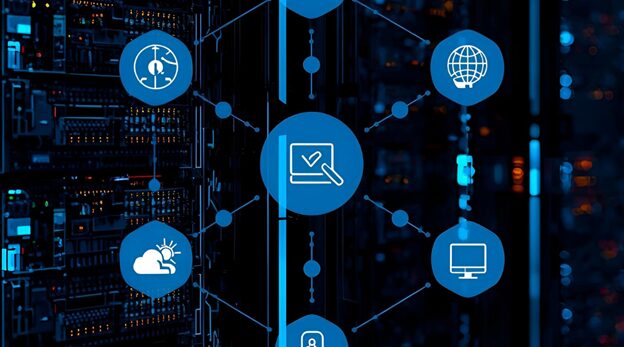The workplace landscape has shifted dramatically over the past few years. Remote team management is no longer just an option but a necessity for most organizations. As we move through 2026, the integration of AI collaboration tools has become essential for teams looking to stay competitive and efficient.
Why AI Collaboration Tools Matter Now
Traditional productivity software is being replaced by intelligent systems that actually understand how teams work. These platforms don’t just store files or host video calls. They analyze patterns and suggest improvements, and automate repetitive tasks that drain team energy.
Remote workers across North America and Europe report spending up to 40% of their time switching between different apps and platforms. AI collaboration tools solve this problem by bringing everything together under one intelligent roof.
Team Workflow Optimization
Modern AI collaboration tools excel at team workflow optimization. They learn from your team’s habits and working patterns. When a project deadline approaches, the system automatically prioritizes tasks and sends smart reminders to the right people at the right time.
These platforms track how long specific tasks typically take your team. They can predict bottlenecks before they happen. When Sarah in marketing usually takes three days to review content, but hasn’t started after two day, the system flags this for the project manager.
The real power comes from automated task assignment. Based on current workload and individual expertise, the AI suggests who should handle new assignments. This removes guesswork from remote team management and ensures balanced workloads across your entire organization.
Modern Productivity Software
Smart meeting summaries have transformed how teams operate in 2026. AI collaboration tools now attend meetings and generate action items automatically. Team members who missed the call can read a concise summary instead of watching hour-long recordings.
Real-time language translation breaks down geographical barriers. Teams in Tokyo can collaborate seamlessly with colleagues in London or New York. The AI handles translation in milliseconds during video calls and in written communications.
Document intelligence has reached new heights. When you upload a contract or project brief, the system extracts key dates and obligations, and deliverables. It creates calendar reminders and assigns preliminary tasks based on document content.
Project Tracking Tools
Project tracking tools in 2026 go far beyond simple kanban boards. They provide predictive analytics that help managers make informed decisions. If a project is trending toward missing its deadline, the system identifies exactly why and suggests corrective actions.
Resource allocation becomes effortless. The AI knows which team members have specialized skills and who has the capacity for new work. When a client in California needs urgent design work, the system can instantly identify available designers across all time zones.
Budget tracking integrates with project milestones. Teams can see real-time spending versus projections. The system alerts managers when costs are approaching limits and suggests ways to optimize resource use.
Remote Team Management
Managing distributed teams requires different tools than traditional office environments. AI collaboration tools provide visibility without micromanagement. Managers can see project progress and team health metrics without constantly checking in with individual contributors.
Automated status updates keep everyone informed. Instead of daily standup meetings that interrupt deep work, the AI compiles progress updates from various sources. Team members review these summaries at times that suit their schedules.
Cultural considerations matter more than ever. AI systems now account for different working hours across continents. They prevent notification fatigue by learning when each team member prefers to receive updates.
Select Right Platform Organization
Small businesses need different features than enterprise organizations. Startups in cities like Austin or Berlin often prioritize ease of use and quick implementation. Larger corporations focus on security features and integration with existing systems.
Consider your team’s technical comfort level. Some platforms require extensive training while others work intuitively from day one. The best AI collaboration tools adapt to your team’s working style rather than forcing you into rigid workflows.
Integration capabilities determine long-term success. Your chosen platform should connect seamlessly with accounting software and CRM systems, and other tools your team already uses.
Future of Team Productivity
AI collaboration tools will continue evolving throughout 2026 and beyond. Voice-first interfaces are gaining traction. Team members can create tasks and schedule meetings, and update projects using natural conversation.
Emotional intelligence features are emerging. Advanced systems can detect team stress levels and suggest breaks or workload adjustments. This protects employee well-being while maintaining high productivity standards.
The investment in proper productivity software pays dividends through reduced turnover and faster project completion and improved client satisfaction. Organizations that embrace these technologies position themselves as employers of choice in competitive talent markets.
Teams that master team workflow optimization through AI tools will dominate their industries. The question isn’t whether to adopt these platforms but how quickly you can implement them effectively.
FAQs
1. What are AI collaboration tools?
AI collaboration tools use artificial intelligence to automate communication, task management, and document sharing, helping teams work smarter and faster.
2. How do AI tools optimize team workflow?
They assign tasks based on skills and availability, send reminders, and highlight priority actions, reducing delays and improving project outcomes.
3. How do AI collaboration tools enhance remote team management?
By enabling real-time editing, automated meeting summaries, and smart scheduling, these tools keep remote teams connected and informed regardless of location.
4. What productivity features do AI collaboration tools offer?
Features like AI-powered summaries, risk detection, automated status updates, and predictive analytics boost productivity by minimizing manual work.
5. How do AI collaboration tools improve project tracking?
They provide insights on task progress, potential bottlenecks, and resource allocation, allowing proactive adjustments to keep projects on track.

